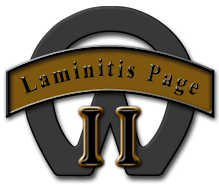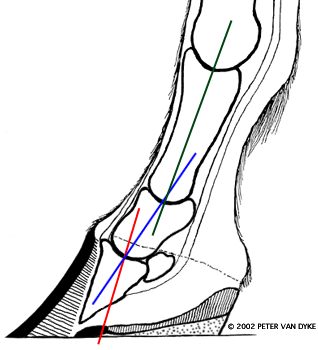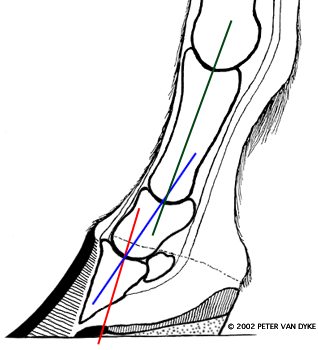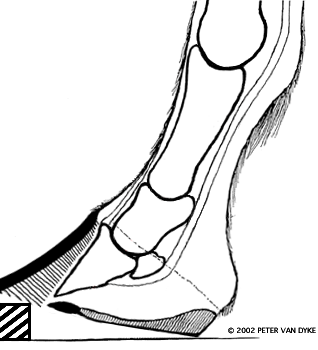|
The illustration above shows how "broken forward" pastern alignment is not effected by trimming the heels in the true DDFT contracture horse. DDFT contracture affects pastern alignment directly. True DDFT contracture will significantly or wholly restrict the ability of the horse to comfortably rest heels of normal length on the ground. This is independent of any lamellar pathology. While DDFT contracture may be a product of chronic laminitis it does not contribute significantly to P3 rotation. However, P3 may not be reducible in the presence of DDFT contracture. When true unresolvable contracture is present DDFT tenotomy is certainly indicated and may be required prior to treatment of founder.
|

|
The illustration above shows how pastern alignment is effected by excessive heel length. When the heel length is corrected the pastern alignment is also corrected. Pastern axis alignment and P3/hoof wall alignment should not be confused with one another. It is important to understand what is causing pastern misalignment. When the misalignment can be corrected easily by lowering the heels or frog support, then clearly DDFT tenotomy is not required. On the other hand, when lowering the heels or frog support are not able to overcome DDFT tension, then tenotomy may be required.
|




